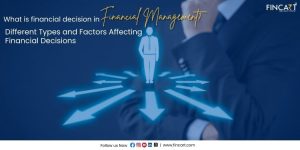A financial lease is a cost-effective way for businesses to access essential assets—such as equipment, vehicles, or machinery—without the burden of immediate ownership. It allows companies to preserve cash flow while acquiring long-term control over operational assets. In this arrangement, the lessee pays fixed rentals over the lease term, with an option to purchase the asset at a nominal price once the term ends.
This approach is increasingly favored over traditional loans for its flexibility and lower capital strain. In this comprehensive guide, our financial planners in Bangalore break down the concept, benefits, key features, types of lease financing, and practical use cases—helping you navigate leasing as part of a broader financial strategy.
This guide will help you understand how financial leasing supports smarter asset management and long-term planning.
What is a Financial Lease?
A financial lease is a contractual agreement where the lessor (financing company) allows the lessee (user) to use an asset for most of its useful life in exchange for fixed lease payments. The ownership, however, stays with the lessor until the end of the lease term, at which point the lessee may have the option to purchase the asset at a predetermined price.
Leasing Definition in Finance
In general terms, leasing in financial services refers to a financing method where an asset is rented instead of purchased. It provides flexibility, conserves capital, and often includes maintenance and service agreements.
Features of Financial Lease
Several features of financial lease distinguish it from operational leases and other financing methods:
- Long Tenure: Typically spans most of the asset’s useful life.
- Transfer of Risk and Rewards: The lessee assumes risks like depreciation, maintenance, and insurance.
- Fixed Lease Payments: Pre-determined payments ensure predictable cash outflow.
- Purchase Option: Often includes a clause to buy the asset at the end of the lease.
- Non-Cancelable: Once agreed upon, the lease generally cannot be cancelled prematurely without significant penalties.
These features of lease financing make financial leases a practical option for asset-heavy businesses.
Types of Leasing in Financial Services
Understanding the types of lease financing is essential when choosing a lease that aligns with your business goals. Here’s a quick look at the types of leasing in financial services:
1. Financial Lease
As discussed, it allows long-term usage with the possibility of asset ownership at the end.
2. Operating Lease
Short-term in nature, the lessor bears the risk of obsolescence. Common in equipment and vehicle rentals.
3. Sale and Leaseback
Involves selling an owned asset to a leasing company and leasing it back, thereby freeing up capital.
4. Leveraged Lease
Involves multiple parties—typically a lender, lessor, and lessee—to finance high-cost assets.
5. Direct Lease
Involves a direct contract between the lessee and lessor, commonly used for machinery and IT equipment.
Advantages of Lease Financing
Why should a business opt for lease financing over outright purchase or bank loans? Let’s explore the advantages of lease financing:
1. Capital Conservation
Leasing frees up working capital, which can be used for other operational or growth-related activities.
2. Easy Access to Equipment
Businesses can obtain the latest equipment without a heavy upfront investment.
3. Flexibility in Terms
Leases can be customized based on payment structure, duration, and end-of-term options.
4. Tax Benefits
Lease payments may be deductible as business expenses, potentially lowering taxable income. That’s where tax consultation services and a reliable tax planner can help you navigate regulations effectively.
5. Off-Balance Sheet Financing (for Operating Leases)
In some cases, leases don’t appear as liabilities on the balance sheet, improving financial ratios.
Finance Lease Advantages and Disadvantages
Like any financial product, finance leases come with pros and cons.
Advantages
- Fixed, predictable payments
- No large upfront investment
- Option to own the asset
- Access to high-value equipment
Disadvantages
- The lessee is responsible for maintenance and insurance
- Lease is usually non-cancelable
- Cost over time may exceed asset value
- May not offer flexibility if the asset becomes obsolete
How Financial Leasing Works: A Step-by-Step Breakdown
Let’s simplify how a financial lease transaction typically unfolds:
- Asset Identification: The lessee identifies the asset (e.g., machinery or vehicle).
- Lessor Engagement: A leasing company purchases the asset on behalf of the lessee.
- Agreement Signing: The terms, such as duration and payments, are mutually agreed upon.
- Asset Delivery: The asset is handed over to the lessee for usage.
- Periodic Payments: Lessee makes fixed monthly or quarterly payments.
- End-of-Term Option: The lessee may purchase the asset, extend the lease, or return it.
Real-Life Example of Financial Lease
Case: A Manufacturing Company
A textile manufacturer in Bangalore needed advanced weaving machinery costing ₹40 lakhs. Instead of depleting working capital, it chose a financial lease arrangement with a tenure of 5 years and fixed quarterly payments.
Outcome:
- The company preserved liquidity
- Benefited from predictable expenses
- Acquired machinery that boosted production
- Eventually purchased the asset at a nominal cost
This example illustrates how financial consultant services can structure leasing solutions tailored to operational goals.
Is Financial Lease Right for You?
Financial leases are best suited for businesses that:
- Require high-value assets for long-term use
- Want predictable payment schedules
- Are okay with maintaining the leased asset
- Plan to eventually own the asset
However, startups or companies with rapidly changing needs might benefit more from operating leases or shorter financing options. Consulting a financial management advisor can help evaluate suitability.
| Financial Lease vs Operating Lease: Key Differences | ||
| Feature | Financial Lease | Operating Lease |
| Ownership | Possible at lease-end | Retained by lessor |
| Lease Tenure | Long-term | Short-term |
| Risk of Obsolescence | Borne by lessee | Borne by lessor |
| Cancelability | Generally non-cancelable | Cancelable |
| Asset Use | Most of its useful life | Partial use |
The Rise of Tech-Enabled Leasing in the Digital Era
As businesses embrace digital transformation, financial leasing has also undergone a significant evolution. What was once a paper-heavy, manual process is now being revolutionized by technology. Today, companies—especially startups and SMEs—can explore and secure lease financing entirely online.
Digital leasing platforms are simplifying the process through:
- Real-time credit assessments for faster approvals
- Automated documentation that reduces paperwork and manual errors
- App-based lease management for real-time tracking of payments and schedules
- Instant comparisons of leasing options from multiple providers
These innovations not only speed up the leasing cycle but also offer greater transparency and accessibility. Businesses can now make quicker, more informed decisions with minimal administrative overhead.
Another emerging trend is the integration of IoT and smart tracking in leased assets. This gives both lessors and lessees the ability to:
- Monitor asset usage and wear in real time
- Automate maintenance reminders and service logs
- Extend the life of high-value equipment through proactive insights
- Reduce misuse and downtime with data-backed analytics
Such advancements are particularly useful for industries that depend heavily on machinery, logistics, and IT infrastructure. As leasing becomes more intelligent and agile, it’s essential to work with a knowledgeable financial consultant who understands how to blend traditional lease structures with modern digital tools.
Whether you’re a growing enterprise or an innovation-led startup, tech-enabled financial leasing is paving the way for smarter asset acquisition and more strategic financial management.
Regulatory and Tax Considerations in India
Under Indian taxation laws, lease payments in financial leases are not considered direct purchases and may be treated differently for depreciation and GST purposes. This makes it vital to have professional guidance through investment planners or tax advisors to ensure compliance and benefit optimization.
Future Outlook of Leasing in India
The leasing sector in India is expected to grow rapidly, driven by increasing asset costs, evolving business models, and digital lending platforms. As businesses become more agile, financial leasing will evolve to encompass newer models like equipment-as-a-service and cloud leasing for IT infrastructure.
Conclusion
Understanding what a finance lease goes beyond textbook definitions. It’s a powerful financial tool that offers flexibility, capital efficiency, and strategic value for businesses. From startups acquiring their first major asset to enterprises scaling operations, finance leasing stands out as a sustainable alternative to traditional loans and purchases.
If you’re exploring ways to optimize asset acquisition and cash flow management, Fincart’s expert financial planners in Bangalore are here to guide you. We offer tailored financial advisory services to help you align leasing decisions with long-term financial goals.




